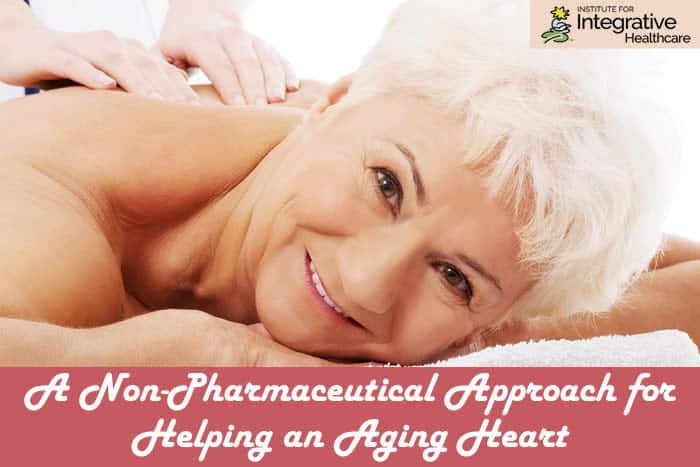

Our aging population is expected to double by the year 2050. As we grow older, our heart and circulatory system are both especially vulnerable. More than 70% of Americans between the ages of 60-79, and 80% of Americans over the age of 80, have some type of cardiovascular system condition. The brain, blood vessels, and heart are most at risk. There are many risk factors for heart disease, such as high blood pressure, smoking, diabetes, being overweight, and inactivity. However, the normal aging process naturally leads to a predisposition for struggles of the heart. So even if we don’t have any of the risk factors for cardiovascular disease, it is still beneficial to consider how our heart is affected by growing older, and ways to bolster our heart’s strength.
The Aging Heart
Our heart progressively deteriorates as we age. The walls of the arteries in and around the heart thicken, the heart’s chambers enlarge, there is an increase in inflammation of the cardiac muscle, and the heart becomes less efficient at pumping blood through our body. There is also less elasticity of the arteries and arterioles in and around the heart, so the pumping motion, during systole pressure, must work harder to move the blood. For this reason, even if no other risk factors are present, high blood pressure and decreased circulation often develop in the older adult.
Cardiomyopathy, or diseases of the heart muscle, are also common. There are several types of cardiomyopathy, but of specific interest is the stress-induced cardiomyopathy, also called broken heart syndrome. The heart emotionally breaks and becomes weaker due to stress, heartache, grief, and other life events. The aging heart is progressively less resilient to stress and exercise.
Research shows, that by adding massage therapy to one’s health care routine, the older adult population may keep their hearts healthier longer. This is because massage has far reaching benefits to support the aging process of the heart.
Massage Is a Non-Invasive Way to Protect Your Heart
Massage therapy is a proactive way to care for one’s heart. Massage therapy is a non-invasive approach to ease age related symptoms for the older adult. It is known that massage is especially powerful at lowering stress and anxiety. By relaxing the body and decreasing stress levels, professional massage therapy is proven to reduce blood pressure and heart rate.
Pre-hypertension is one way of predicting cardiovascular disease. In a study completed in 2013, researchers found that pre-hypertensive women benefitted from 10-15 minute massages (10 sessions over the course of 3.5 weeks). There was a significant lowering of overall blood pressure for these women. Most remarkable was that their blood pressure remained lower for up to three days after each massage session. Therefore, the side effects and long-term effects of potentially high blood pressure could be avoided by implementing regular massage into their health care routine.
Once an adult has primary hypertension, massage therapy is also an effective intervention to help protect the heart. In a study done with older adult patients with primary hypertension, Swedish back massage significantly reduced blood pressure. The patients received two 10-minute Swedish back massages per week, for 12 weeks. Both diastolic and systolic pressure were measured to be lower following each massage session. Again, massage therapy proved to be a successful non-pharmaceutical approach to lowering blood pressure.
By lowering blood pressure, massage therapy is effective at supporting the aging heart.
Giving Massage Builds a Strong Heart for the Elderly
In a beautiful give and take model, the geriatric population also benefits from the opportunity to give massage to others. When a group of elderly volunteers had the opportunity to give massage to infants at a preschool, the results were incredible. The touch given to the babies not only benefited them, but it also improved the health of the elderly volunteers.
Over the course of three weeks, the volunteers had less anxiety and depression, as well as less stress hormone levels. They felt relaxed, happy, and at ease when working with the babies. The unspoken conversation of loving touch was a mutual benefit for the babies and the older volunteers. This decrease in stress brings significant benefits to their heart and overall wellbeing.
Healthy Aging and Geriatric Massage Considerations
When we are working as massage therapists with the older adult population, we are met with a vast array of challenges. It is important to remember the varied needs of these clients. Some older adults may be strong, both mentally and physically, while others will be frail or struggling with many health-related challenges. Always complete a comprehensive health intake with each client, and plan your sessions accordingly.
Massage sessions may be shorter because 30-45 minutes is sufficient to help them relax without being too much for their body. Or sometimes you may need a longer session to work slower and meet the unique needs of your client.
Some session guidelines may include:
- moderated massage techniques
- slower pace
- patience
- respect for aging process
- being fully present
We all need touch to thrive and feel fully alive. Simple, short, compassionate massage sessions, both given and received by the aging population, can make a difference in their heart health.
Recommended Home Study Massage CE Courses
Comfort Touch® – Massage for the Elderly & Ill
Geriatric Precautions











